- No products in the cart.
Ciprofloxacin-Teva tab n / 500mg film about 10 pc
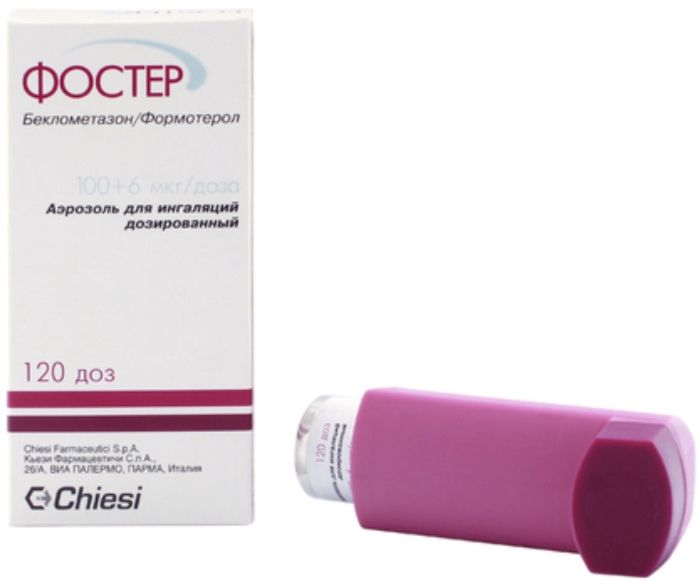
Foster spray ing. scrapper. 6mkg + 0.1mg / dose 120doz
$50.90
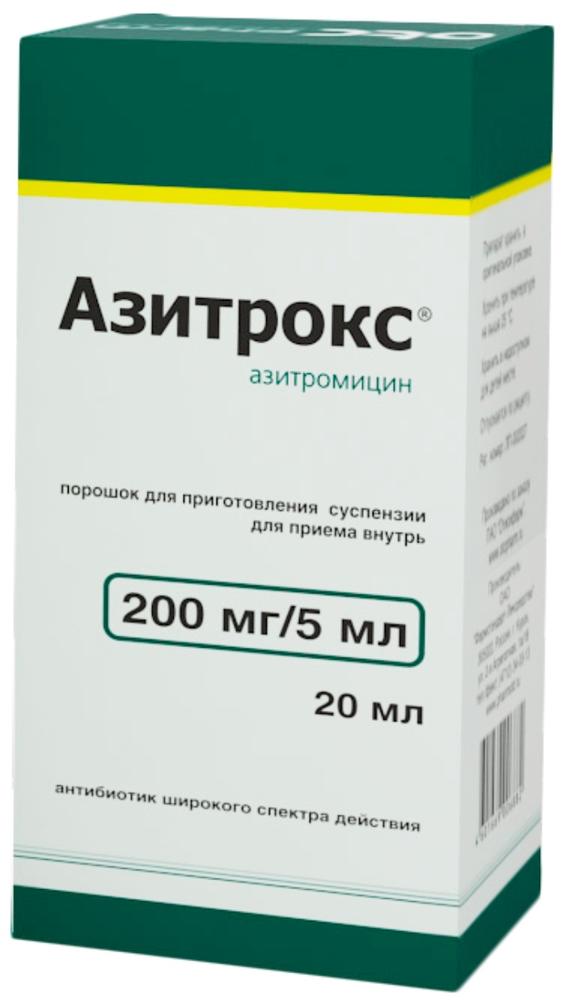
Azitroks prig.susp.dlya powder for oral 200mg / 5ml vial 15.9g one piece with the measuring spoon and a pipette
$7.09
$3.06
Ciprofloxacin-Teva tab n / 500mg film about 10 pc
SKU: 01073811834 Categories: Antibacterial, Antibiotics, antimicrobial, antiparasitic, Medicaments Tags: ciprofloxacin, TEVA
Description
Composition
Active substance:
Ciprofloxacin 500.0 mg (Ciprofloxacin hydrochloride monohydrate 582.2 mg)
Excipients:
microcrystalline cellulose 73.30 mg Povidone K-30 37.50 mg 42.00 mg sodium croscarmellose, colloidal silicon dioxide 7.50 mg magnesium stearate 7.50 mg;
shell Opadry White Y-1-7000H: hypromellose 6.250 mg, 3.1250 mg of titanium dioxide, Macrogol 400 0.6250 mg.
Description:
kapsulovidnye tablets, film-coated white engraved “CIP 500” and the line on one side. In the cross-sectional two layers are visible. The core of white to yellowish-white in color.
Product form:
Tablets, film-coated, 500 mg.
10 tablets in blisters of PVC / PVDC / Al foil. 1 blister with instructions for use in a cardboard package.
Contraindications
Hypersensitivity to ciprofloxacin or other drugs of fluoroquinolone, as well as auxiliary substances (see. The section “Composition”).
Simultaneous use of ciprofloxacin and tizanidine due clinically significant side effects (hypotension, drowsiness) associated with an increase in the plasma concentration of tizanidine (see. See “The interaction with other drugs”).
Use in children
Ciprofloxacin is not recommended for children under 18 years for the treatment of other infectious diseases, other than the treatment of complications of lung of cystic fibrosis (in children from 5 to 17 years) caused by Pseudomonas aeruginosa, and for the treatment and prophylaxis of inhalational anthrax (after suspected or proven infection Bacillus anthracis). The use of ciprofloxacin in children should be started only after an evaluation of the benefit / risk due to possible side effects on the joints and tendons.
Carefully
By diseases of the central nervous system: epilepsy, decreased seizure threshold (or a history of seizures), decreased blood flow in brain vessels, organic brain lesions or a stroke; psychiatric disorders (depression, psychosis); renal failure, hepatic failure in combination with renal impairment, advanced age.
Dosage
500 mg
Indications
Uncomplicated and complicated infections caused by ciprofloxacin-sensitive microorganisms.
Adults:
– respiratory infection. Ciprofloxacin recommended for pneumonia caused by Klebsiella spp., Enterobacter spp., Proteus spp., Esherichia coli, Pseudomonas aeruginosa, Haemophilus spp., Moraxella catarrhalis, Legionella spp. istafilokokkami;
– middle ear infections (otitis media), paranasal sinuses (sinusitis), especially if these infections are caused by gram-negative organisms, including Pseudomonas aeruginosa or Staphylococcus;
– infections of the eye;
– kidney infections and / or urinary tract;
– genital infections, including adnexitis, gonorrhea, prostatitis;
– abdominal infections (bacterial infection of the gastrointestinal tract, biliary tract, peritonitis);
– Skin and soft tissue infections;
– sepsis;
– infection or prevention of infections in patients with reduced immunity (patients taking antidepressants or patients with neutropenia);
– selective intestinal decontamination in patients with reduced immunity;
– prevention and treatment of inhalational anthrax (infection with Bacillus anthracis);
– prevention of invasive disease caused by Neisseria meningitides.
It is necessary to take into consideration existing official guidance on the rules of use of antibacterial agents.
Children – Treatment of the complications caused by Pseudomonas aeruginosa in children with cystic fibrosis lung from 5 to 17 years;
– prevention and treatment of inhalational anthrax (infection with Bacillus anthracis).
Interaction with other drugs
Drugs causing prolongation of the QT interval
Caution must be exercised while the use of ciprofloxacin, like other fluoroquinolones, patients receiving drugs that cause lengthening of the interval QT (e.g., antiarrhythmic drugs of class I A or Class III, tricyclic antidepressants, macrolides, antipsychotics), see. See “Cautions” .
Chelating.
Simultaneous reception of tableted forms of ciprofloxacin and cationic agents, mineral supplements containing calcium, magnesium, aluminum, iron, sucralfate, antacids, polymeric phosphate compounds (such as sevelamer, lanthanum carbonate) and drugs with high buffering capacity (such as didanosine tablets) containing magnesium, aluminum or calcium, reduces the absorption of ciprofloxacin. In such cases, ciprofloxacin should take 1-2 hours either before or after 4 hours after the administration of these drugs.
This restriction does not apply to drugs belonging to the class of blockers H2-histamine receptors.
Meal and milk products
It should avoid the simultaneous use of ciprofloxacin and dairy products or drinks, fortified with minerals (e.g., milk, yogurt, calcium-fortified orange juice), as this may decrease the absorption of ciprofloxacin. However, calcium, part of the other foods, did not significantly affect the absorption of ciprofloxacin.
omeprazole
With simultaneous use of ciprofloxacin and preparations containing omeprazole, there may be a slight reduction in the maximum drug concentration in plasma and the reduction in area under the curve “concentration-time”.
theophylline
Simultaneous use of ciprofloxacin and drugs containing theophylline can cause an undesirable increase in the theophylline concentration in blood plasma and, accordingly, the occurrence of theophylline-induced adverse events; In very rare cases, these adverse events can be threatening to the patient’s life. If simultaneous use of these two drugs is inevitable, it is recommended to conduct continuous monitoring of theophylline concentration in blood plasma and, if necessary, reduce the dose of theophylline (see. “Specific information” section, cytochrome P450).
Other xanthine derivatives
Simultaneous use of ciprofloxacin and caffeine or pentoxifylline (okspentifillin) may lead to increased concentrations of xanthine derivatives in the blood serum.
Nonsteroidal anti-inflammatory drugs
The combination of very high doses of quinolones (DNA gyrase inhibitors) and certain non-steroidal anti-inflammatory drugs (excluding acetylsalicylic acid) can provoke convulsions.
cyclosporine
With simultaneous use of ciprofloxacin and preparations containing cyclosporin, it was observed short transient increase in the concentration of creatinine in plasma. In such cases it is necessary twice a week to determine the concentration of creatinine in the blood.
Oral hypoglycemic agents
With simultaneous use of ciprofloxacin and oral hypoglycemic agents are mainly sulfonylurea drugs (e.g., glibenclamide, glimepiride), hypoglycaemia presumably due to increased action of oral hypoglycemic agents (see. The section “Side effect”).
probenecid
Probenecid slows the rate of excretion of ciprofloxacin pochkami.Odnovremennoe use of ciprofloxacin and drugs containing probenecid leads to an increase in the concentration of ciprofloxacin in plasma.
phenytoin
With simultaneous application of ciprofloxacin and phenytoin was observed to change (increase or decrease) the content of phenytoin plasma. To avoid weakening the anticonvulsant effects of phenytoin due to a decrease of its concentration, as well as for preventing adverse effects associated with overdose phenytoin upon discontinuance of ciprofloxacin is recommended to monitor the therapy of phenytoin in patients receiving both drugs, including the determination of plasma phenytoin throughout period of the simultaneous use of both drugs and a short time after completion of a combination therapy.
methotrexate
With simultaneous use of methotrexate and ciprofloxacin may be delayed renal tubular transport of methotrexate, which may be accompanied by increased concentration of methotrexate in the blood plasma. This may increase the likelihood of side effects of methotrexate. In this regard, patients receiving concurrent therapy with methotrexate and ciprofloxacin, must be installed carefully monitored.
tizanidine
In a clinical study involving healthy volunteers while the use of ciprofloxacin and drugs containing tizanidine, showed an increase in serum concentration of tizanidine: increase in maximum concentration (Cmax) 7 times (4 to 21 times) increase in the AUC (area under concentration curve “concentration-time”) 10 times (from 6 to 24 times). The increase in serum concentration of tizanidine can cause a reduction in blood pressure and drowsiness. Thus, the simultaneous use of ciprofloxacin and drugs containing tizanidine,
contraindicated.
duloxetine
During clinical studies it was shown that the simultaneous use of duloxetine and potent inhibitors of CYP450 isozyme 1A2 (such as fluvoxamine), may lead to an increase in AUC and Cmax of duloxetine. Despite the absence of clinical data on possible interaction with ciprofloxacin, can foresee the probability of such an interaction while the use of ciprofloxacin and duloxetine.
ropinirole
Simultaneous application of ropinirole and ciprofloxacin, a moderate inhibitor of CYP450 1A2 isozyme, causes an increase in Cmax and AUC of ropinirole at 60 and 84%, respectively. It should control the adverse effects of ropinirole during its combined use with ciprofloxacin and within a short time after completion of the combination therapy.
lidocaine
In a study on healthy volunteers it has been found that the simultaneous application of preparations containing lidocaine and ciprofloxacin, moderate CYP450 isozyme 1A2 inhibitor leads to a decrease in lidocaine clearance by 22% when administered intravenously. Despite the good tolerability of lidocaine while the use of ciprofloxacin possible increased side effects due to the interaction (see. The section “Specific guidance” Cytochrome P450).
clozapine
With simultaneous use of clozapine and ciprofloxacin at a dose of 250 mg during 7 days, there was an increase in serum concentrations of clozapine and N-desmethylclozapine 29% and 31% respectively. The patient should be monitored and if necessary to conduct correction of clozapine dosing regimen during its combined use with ciprofloxacin and within a short time after completion of a combination therapy (see. The section “Specific guidance” Cytochrome P450).
sildenafil
With simultaneous application of ciprofloxacin in healthy volunteers at a dose of 500 mg and sildenafil at a dose of 50 mg, an increase in Cmax and AUC of sildenafil 2 times. In this regard, the use of this combination is only possible after evaluation benefit / risk ratio.
Vitamin K antagonists
The combined use of ciprofloxacin and vitamin K antagonists (e.g. warfarin, acenocoumarol, phenprocoumon, fluindona) can lead to an enhancement of the anticoagulant action. The magnitude of this effect can vary depending upon concomitant infection, the age and general condition of the patient, it is difficult to estimate the influence of ciprofloxacin on increasing MHO (international normalized ratio). It is often sufficient to monitor MHO joint application time of ciprofloxacin and vitamin K-antagonists as well as for a short time after completion of a combination therapy.
Overdose
In case of overdose orally in a few cases it has been noted reversible toxic to renal parenchyma. Therefore, in the case of overdose, except of standard measures (gastric lavage, followed by a take activated charcoal, introduction of a large amount of liquid, creating acidic urine to prevent crystalluria), it is also recommended to monitor renal function and receive magniyi calcium containing antacids which reduce the absorption ciprofloxacin. With hemo or peritoneal dialysis is output only a small amount of ciprofloxacin (less than 10%).
pharmachologic effect
Pharmacological group:
antimicrobial – fluoroquinolone
Pharmacodynamics:
Ciprofloxacin is a synthetic antibacterial agent of a broad spectrum fluoroquinolone.
Mechanism of action
Ciprofloxacin possesses in vitro activity against a broad spectrum of gram-negative and gram-positive microorganisms. The bactericidal effect of ciprofloxacin is carried out by inhibiting bacterial type II topoisomerases (topoisomerase II (DNA gyrase) and topoisomerase IV), which are required for replication, transcription, repair and recombination of the bacterial DNA.
mechanisms of resistance
In vitro resistance to ciprofloxacin is often caused by point mutations bacterial topoisomerase and DNA gyrase and evolves slowly by multistage mutations.
Single mutations can lead to the reduction of sensitivity rather than the development of clinical resistance, but multiple mutations generally result in the development of clinical resistance to ciprofloxacin and cross-resistance to drugs quinolone series. Resistance to ciprofloxacin, like many other antibiotics, can be generated by reducing the permeability of the bacterial cell wall (as it often happens in the case of Pseudomonas aeruginosa) and / or activation of excretion from microbial cells (efflux).
It reported on the development of resistance caused by localized on plasmids encoding gene Qnr. Resistance mechanisms that lead to inactivation of penicillins, cephalosporins, aminoglycoside, macrolide and tetracycline, probably not violate the antibacterial activity of ciprofloxacin.
Microorganisms that are resistant to these drugs may be susceptible to ciprofloxacin. Minimal bactericidal concentration (MBC) generally does not exceed the minimum inhibitory concentration (MIC) by more than 2 times.
Sensitivity testing in vitro
Reproducible criteria for sensitivity studies to ciprofloxacin, adopted by the European Committee for determining sensitivity to antibiotics (EUCAST), are presented in the table below:
The European Committee for the determination of antibiotic susceptibility.
Border MIC values (mg / l) in a clinical setting for ciprofloxacin
Microorganism Sensitive [mg / l] Resistance [mg / l]
Enterobacteriaceae 1
Pseudomonas spp. 1
Acinetobacter spp. 1
Staphylococcus1 spp. 1
Streptococcus pneumoniae2 2
Neisseria gonorrhoeae 0,06
Neisseria meningitides 0,06
Haemophilys influenzae u 0,5
Moraxella catarrhalis3
Boundary values 1
Non-species mikroorganizmov4
1. Staphylococcus spp. – frontier values for ciprofloxacin and ofloxacin relate to high-dose therapy.
2. Streptococcus pneumoniae – wild type S. pneumoniae are not considered susceptible to ciprofloxacin and ofloxacin, and thus falls into the category of microorganisms with intermediate sensitivity.
3. Strains with MIC values greater than the threshold value for sensitive / moderately sensitive, very rare, and still they did not have a message. Tests for the identification and antimicrobial sensitivity when detecting such colonies must be repeated and the results should be confirmed by analysis of the colonies in the reference laboratory. Until then, until you have obtained evidence of clinical response for confirmed isolates with MIC values greater than are currently in use resistance threshold, they should be considered as resistant.
Haemophilus spp. / Moraxella spp. – possibly identifying Haemophilus influenzae strains with low sensitivity to fluoroquinolones (ciprofloxacin MIC – 0,125-0,5 mg / l). Clinical evidence of resistance values at low respiratory tract infections caused by H. Influenzae, no.
4. Boundary values are not related to the kinds of microorganisms, determined mainly on the basis of pharmacokinetic / pharmacodynamic and are independent of MIC distributions of specific species. They only apply to species for which the threshold of sensitivity, specificity for the species has not been determined, and not for those species for which is not recommended for susceptibility testing. For certain strains spread of acquired resistance may vary depending on geographic region and over time. In this connection, it is desirable to have the local information on resistance, especially in the treatment of serious infections.
Institute These clinical and laboratory standards for the border values of MIC (mg / L), and diffusion test (zone diameter [mm]) c using discs containing 5 mg of ciprofloxacin are shown in the table below.
Institute of Clinical and Laboratory Standards. Boundary values for MIC (mg / l) and for the diffusion test (mm) using a drive
Sensitive Intermediate Resistant microorganism Enterobacteriaseae 4a> 21b 16-20b 4a belonging to the family> 21b 16-20b
Epterobacteriaceae
Staphylococcus spp 4a> 21b 16-20b 4a> 21b 16-20b 21g – –
Neisseria gonorrhoeae 1e> 41d 28-40d 0,12e> 35zh 33-34zh
in. Этот воспроизводимый стандарт применим только к диффузионным тестам с использованием дисков для определения чувствительности с Haemophilus influenzae и Haemophilus parainfluenzae с применением бульонной тестовой среды для Haemophilus spp. (HTM), которую инкубируют с доступом воздуха при температуре 35°С ± 2°С в течение 20-24 ч.
г. Этот воспроизводимый стандарт применим только к диффузионным тестам с использованием дисков с применением НТМ, которую инкубируют в 5% СO2 при температуре 35°С ± 2°С в течение 16-18 ч.
д. Этот воспроизводимый стандарт применим только к тестам чувствительности (диффузионные тесты с использованием дисков для зон и раствор агара для МИК) с применением гонококкового агара и 1% установленной ростовой добавки при температуре 36°С ± 1°С (не превышающей 37°С) в 5% СO2 в течение 20-24 ч.
е. Этот воспроизводимый стандарт применим только к тестам с использованием разведений с бульоном с применением катионного скорректированного бульона Мюллера-Хинтона (САМНВ) с добавлением 5% крови овец, который инкубируют в 5% СO2 при 35 ± 2 °С в течение 20-24 ч.
ж. Этот воспроизводимый стандарт применим только к тестам с использованием разведений с бульоном с применением катионного скорректированного бульона Мюллера-Хинтона (САМНВ) с добавлением определенной 2% ростовой добавки, который инкубируют с доступом воздуха при 35 ± 2 °С в течение 48 ч.
In vitro чувствительность к ципрофлоксацину
Для определенных штаммов распространение приобретенной резистентности может различаться в зависимости от географического региона и с течением времени. В связи с этим при тестировании чувствительности штамма желательно иметь местную информацию о резистентности, особенно при лечении тяжелых инфекций. Если местная распространенность резистентности такова, что польза применения препарата, по крайней мере, в отношении нескольких типов инфекций, сомнительна, – необходимо проконсультироваться со специалистом.
In vitro была продемонстрирована активность ципрофлоксацина в отношении следующих чувствительных штаммов микроорганизмов:
Аэробные грамположительные микроорганизмы:Bacillus anthracis, Staphylococcus aureus (метициллин-чувствительные), Staphylococcus saprophyticus, Streptococcus spp.
Аэробные грамотрицательные микроорганизмы:Aeromonas spp., Moraxella catarrhalis, Brucella spp., Neisseria meningitidis, Citrobacter koseri, Pasteurella spp., Francisella tularensi. Salmonella spp., Haemophilus ducreyi. Shigella spp., Haemophilius influenzae, Vibrio spp., Legionella spp., Yersinia pestis.
Анаэробные микроорганизмы:Mobiluncus spp.
Другие микроорганизмы:Chlamydia trachomatis, Chlamydia pneumoniae, Mycoplasma hominis, Mycoplasma pneumoniae.
Была продемонстрирована варьирующая степень чувствительности к ципрофлоксацину для следующих микроорганизмов: Acinetobacter baumann, Burkholderia cepacia, Campylobacter spp., Citrobacter freundii, Enterococcus faecalis, Enterobacter aerogenes, Enterobacter cloacae, Escherichia coli, Klebsiella pneumoniae, Klebsiella oxytoca, Morganella morganii, Neisseria gonorrhoeae, Proteus mirabilis, Proteus vulgaris, Providencia spp., Pseudomonas aeruginosa, Pseudomonas fluorescens, Serratia marcescens, Streptococcus pneumoniae, Peptostreptococcus spp., Propionibacterium acnes.
Считается, что природной резистентностью к ципрофлоксацину обладают Staphylococcus aureus (метициллин-резистентный), Stenotrophomonas maltophilia, Actinomyces spp., Enterococcus faecium, Listeria monocytogenes, Mycoplasma genitalium, Ureaplasma urealitycum, анаэробные микроорганизмы (за исключением Mobiluncus spp., Peptostreptococus spp., Propionibacterium acnes).
Pharmacokinetics:
Suction.
После перорального применения ципрофлоксацин быстро всасывается преимущественно в тонкой кишке. Максимальная концентрация ципрофлоксацина в сыворотке крови достигается через 1-2 ч. Биодоступность составляет около 70-80%.
Значения максимальной концентрации в плазме крови (Сmах) и площади под кривой «концентрация – время» (AUC) возрастают пропорционально дозе.
Distribution.
Связь ципрофлоксацина с белками плазмы крови составляет 20-30%; активное вещество присутствует в плазме крови преимущественно в неионизированной форме. Ципрофлоксацин свободно распределяется в тканях и жидкостях организма. Объем распределения в организме составляет 2-3 л/кг.
Концентрация ципрофлоксацина в тканях значительно превышает концентрацию в сыворотке крови.
Metabolism.
Биотрансформируется в печени. В крови могут обнаруживаться четыре метаболита ципрофлоксацина в небольших концентрациях: диэтилципрофлоксацин (M1), сульфоципрофлоксацин (М2), оксоципрофлоксацин (М3),
формилципрофлоксацин (М4), три из которых (М1-М3) проявляют антибактериальную активность in vitro, сопоставимую с антибактериальной активностью налидиксовой кислоты. Антибактериальная активность in vitro метаболита М4, присутствующего в меньшем количестве, больше соответствует активности норфлоксацина.
Withdrawal.
Ципрофлоксацин выводится из организма преимущественно почками путем клубочковой фильтрации и канальцевой секреции; незначительное количество – через желудочно-кишечный тракт. Почечный клиренс составляет 0,18-6,3 л/ч/кг, общий клиренс – 0,48-0,60 л/ч/кг. Примерно 1% вводимой дозы выводится с желчью. В желчи ципрофлоксацин присутствует в высоких концентрациях. У больных с неизмененной функцией почек период полувыведения составляет обычно 3-5 ч. При нарушении функции почек период полувыведения увеличивается.
Pregnancy and breast-feeding
Безопасность применения ципрофлоксацина у беременных не установлена. Однако на основании результатов исследований на животных нельзя полностью исключить вероятность неблагоприятного воздействия на суставные хрящи новорожденных, в связи с этим ципрофлоксацин не следует назначать беременным женщинам. В то же время в ходе исследований на животных тератогенного действия (мальформаций) установлено не было.
Ципрофлоксацин выделяется в грудное молоко. Из-за потенциального риска повреждения суставных хрящей новорожденных, ципрофлоксацин не следует назначать кормящим женщинам.
Conditions of supply of pharmacies
Prescription.
side effects
Перечисленные ниже нежелательные реакции классифицировали следующим образом: «очень часто» (> 10), «часто» (от >1/100 до
special instructions
Тяжелые инфекции, стафилококковые инфекции и инфекции, обусловленные грамположительными и анаэробными бактериями
При лечении тяжелых инфекций, стафилококковых инфекций и инфекций, обусловленных анаэробными бактериями, ципрофлоксацин следует использовать в комбинации с соответствующими антибактериальными средствами.
Инфекции, обусловленные Streptococcus pneumoniae
Ципрофлоксацин не рекомендуется использовать для лечения инфекций, вызванных Streptococcus pneumoniae, из-за его ограниченной эффективности в отношении возбудителя.
Инфекции половых путей
При генитальных инфекциях, предположительно вызванных штаммами Neisseria gonorrhoeae, устойчивыми к фторхинолонам, следует учитывать информацию о локальной резистентности к ципрофлоксацину и подтверждать чувствительность возбудителя лабораторными тестами.
Violations of the heart
Ципрофлоксацин оказывает влияние на удлинение интервала QT (см. раздел «Побочное действие»). Учитывая, что для женщин характерна большая средняя продолжительность интервала QT по сравнению с мужчинами, они более чувствительны к препаратам, вызывающим удлинение интервала QT. У пожилых пациентов также отмечается повышенная чувствительность к действию препаратов, вызывающих удлинение интервала QT. Следует с осторожностью использовать ципрофлоксацин в комбинации с препаратами, удлиняющими интервал QT (например,
антиаритмическими препаратами классов I А и III, трициклическими антидепрессантами, макролидами и антипсихотическими препаратами), см. раздел «Взаимодействие с другими лекарственными препаратами», или у пациентов с повышенным риском удлинения интервала QT или развития аритмии типа «пируэт» (например, с врожденным синдромом удлинения интервала QT, некорректированным дисбалансом электролитов, таким как гипокалиемия или гипомагниемия, а также с такими заболеваниями сердца, как сердечная недостаточность, инфаркт миокарда, брадикардия).
Use in children
Было установлено, что ципрофлоксацин, как и другие препараты этого класса, вызывает артропатию крупных суставов у животных. При анализе существующих на сегодняшний день данных о безопасности применения ципрофлоксацина у детей до 18 лет, большинство из которых имеют муковисцидоз легких, не установлено связи между повреждением хряща или суставов и приемом препарата. Не рекомендуется использовать ципрофлоксацин у детей для лечения других заболеваний, кроме лечения осложнений муковисцидоза легких (у детей от 5 до 17 лет), связанных с Pseudomonas aeruginosa и для лечения и профилактики легочной формы сибирской язвы (после предполагаемого или доказанного инфицирования Bacillus anthracis).
Hypersensitivity
Иногда уже после приема первой дозы ципрофлоксацина может развиться гиперчувствительность к препарату (см. раздел «Побочное действие»), в том числе аллергические реакции, о чем следует немедленно сообщить лечащему врачу. В редких случаях после первого применения могут возникнуть анафилактические реакции вплоть до анафилактического шока. В этих случаях применение ципрофлоксацина следует немедленно прекратить и провести соответствующее лечение.
Желудочно-кишечный тракт
При возникновении во время или после лечения ципрофлоксацином тяжелой и длительной диареи следует исключить диагноз псевдомембранозного колита, который требует немедленной отмены препарата и назначения соответствующего лечения (ванкомицин внутрь в дозе 250 мг 4 раза в сутки). В данной ситуации противопоказано применение препаратов, подавляющих перистальтику кишечника.
Гепатобилиарная система
При применении ципрофлоксацина отмечались случаи некроза печени и жизнеугрожающей печеночной недостаточности. При наличии следующих признаков заболевания печени, таких как анорексия, желтуха, темная моча, зуд, болезненный живот – прием ципрофлоксацина следует прекратить (см. раздел «Побочное действие»).
У пациентов, принимающих ципрофлоксацин и перенесших заболевание печени, может наблюдаться временное повышение активности «печеночных» трансаминаз и щелочной фосфатазы или холестатическая желтуха.
Опорно-двигательный аппарат
Пациентам с тяжелой миастенией следует применять ципрофлоксацин с осторожностью, так как возможно обострение симптомов.
При первых признаках тендинита (болезненный отек в области сустава, воспаление) применение ципрофлоксацина следует прекратить, исключить физические нагрузки, т.к. существует риск разрыва сухожилия, а также проконсультироваться с врачом. При приеме ципрофлоксацина могут отмечаться случаи тендинита и разрыва сухожилий (преимущественно ахиллового сухожилия) иногда билатерально, уже в течение первых 48 часов после начала терапии. Воспаление и разрыв сухожилия могут возникнуть даже через несколько месяцев после прекращения лечения ципрофлоксацином. У пожилых пациентов и у пациентов с заболеваниями сухожилий, одновременно получающих лечение кортикостероидами, существует повышенный риск возникновения тендинопатии.
Ципрофлоксацин следует применять с осторожностью у пациентов, имеющих в анамнезе указания на заболевания сухожилий, связанные с приемом хинолонов.
Nervous system
Ципрофлоксацин, как и другие фторхинолоны, может провоцировать судороги и снижать порог судорожной готовности. Пациентам с эпилепсией и перенесшим заболевания ЦНС (например, снижение порога судорожной готовности, судорожные припадки в анамнезе, нарушения мозгового кровообращения, органические поражения головного мозга или инсульт) в связи с угрозой развития побочных реакций со стороны ЦНС, ципрофлоксацин следует применять только в тех случаях, когда ожидаемый клинический эффект превосходит возможный риск развития побочного действия препарата.
При применении ципрофлоксацина сообщалось о случаях развития эпилептического статуса (см. раздел «Побочное действие»). При возникновении судорог применение препарата следует прекратить.
Психические реакции могут возникнуть даже после первого применения фторхинолонов, включая ципрофлоксацин. В редких случаях депрессия или психотические реакции могут прогрессировать до суицидальных мыслей и суицидальных попыток, в том числе завершенных (см. раздел «Побочное действие»).
Если у пациента развивается одна из этих реакций, следует прекратить прием ципрофлоксацина и сообщить об этом врачу.
У пациентов, принимающих фторхинолоны, включая ципрофлоксацин, отмечались случаи сенсорной или сенсомоторной полинейропатии, гипестезии, дизестезии или слабости. При возникновении таких симптомов как боль, жжение, покалывание, онемение, слабость, пациенту следует проинформировать врача прежде, чем продолжить применение препарата.
skin
При приеме ципрофлоксацина может возникнуть реакция фотосенсибилизации, поэтому пациентам следует избегать контакта с прямыми солнечными лучами и УФ-светом. Лечение следует прекратить, если наблюдаются симптомы фотосенсибилизации (например, изменение кожных покровов напоминает солнечные ожоги, см. раздел «Побочное действие»).
Цитохром Р450
Известно, что ципрофлоксацин является умеренным ингибитором изоферментов CYP 450 1А2. Следует соблюдать осторожность при одновременном применении ципрофлоксацина и препаратов, метаболизируемых данными ферментами, таких как:
тизанидин, теофиллин, метилксантин, кофеин, дулоксетин, ропинирол, клозапин, оланзапин, – так как увеличение концентрации этих препаратов в сыворотке крови, обусловленное ингибированием их метаболизма ципрофлоксацином, может вызвать специфические нежелательные реакции.
Во избежание развития кристаллурии недопустимо превышение рекомендованной суточной дозы, необходимо также достаточное потребление жидкости и поддержание кислой реакции мочи.
В условиях in vitro ципрофлоксацин может мешать бактериологическому исследованию Mycobacterium tuberculosis, подавляя ее рост, что может приводить к ложноотрицательным результатам при диагностике данного возбудителя у пациентов, принимающих ципрофлоксацин.
Effect on the ability to drive mechanisms and
Фторхинолоны, включая ципрофлоксацин, могут нарушать способность пациентов управлять автомобилем и заниматься другими потенциально опасными видами деятельности, требующими повышенного внимания и быстроты психомоторных
Storage conditions
Store at a temperature not higher than 25 ° C.
Keep out of the reach of children.
Dosing and Administration
Таблетки следует принимать внутрь, независимо от приема пищи, не разжевывая, запивая небольшим количеством жидкости.
Если препарат применяется натощак, активная субстанция всасывается быстрее. В этом случае таблетки не следует запивать молочными продуктами или напитками, обогащенными кальцием (например, молоко, йогурт, соки с повышенным содержанием кальция). Кальций, содержащийся в обычной пище, не влияет на всасывание ципрофлоксацина.
Если из-за тяжести состояния или по иным причинам пациент лишен возможности принимать таблетки, ему рекомендуется проводить парентеральную терапию инфузионным раствором ципрофлоксацина, а после улучшения состояния перейти на прием таблетированной формы препарата.
При отсутствии других назначений рекомендуется соблюдать следующий режим дозирования:
Adults
Рекомендуемая суточная доза препарата
Additional information
| Weight | 0.100 kg |
|---|---|
| Manufacturer | TEVA |

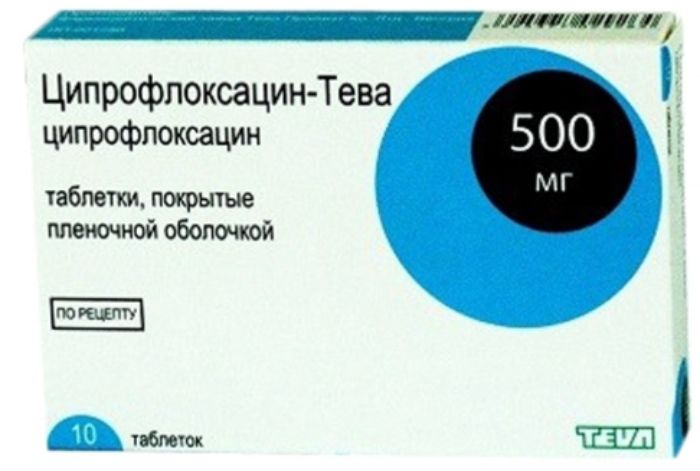
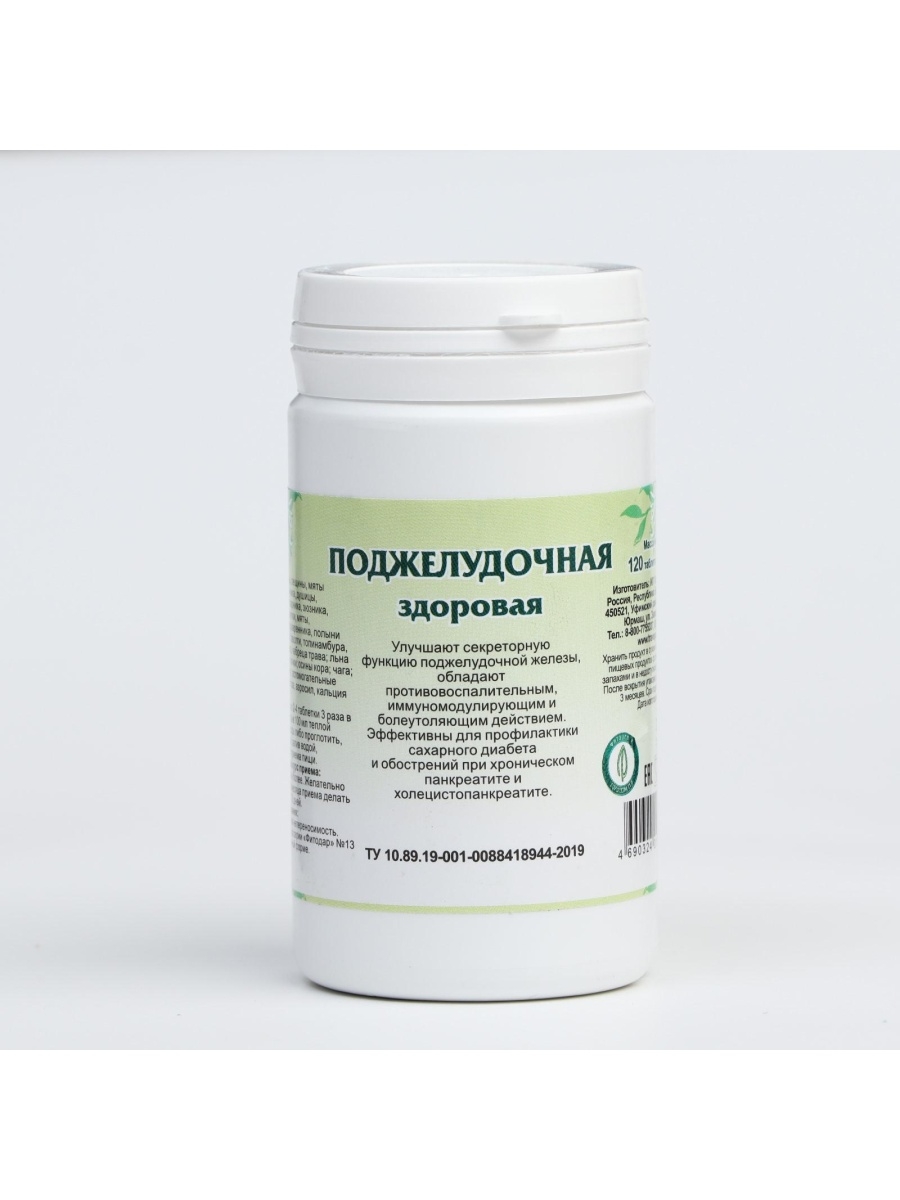


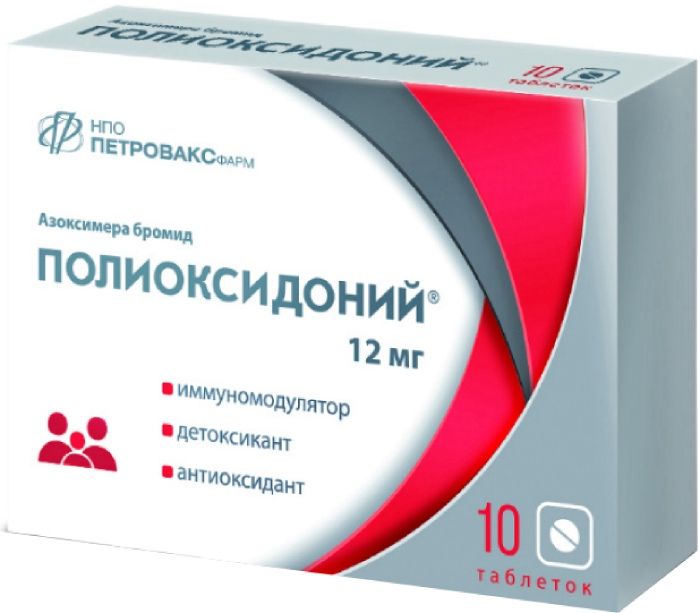
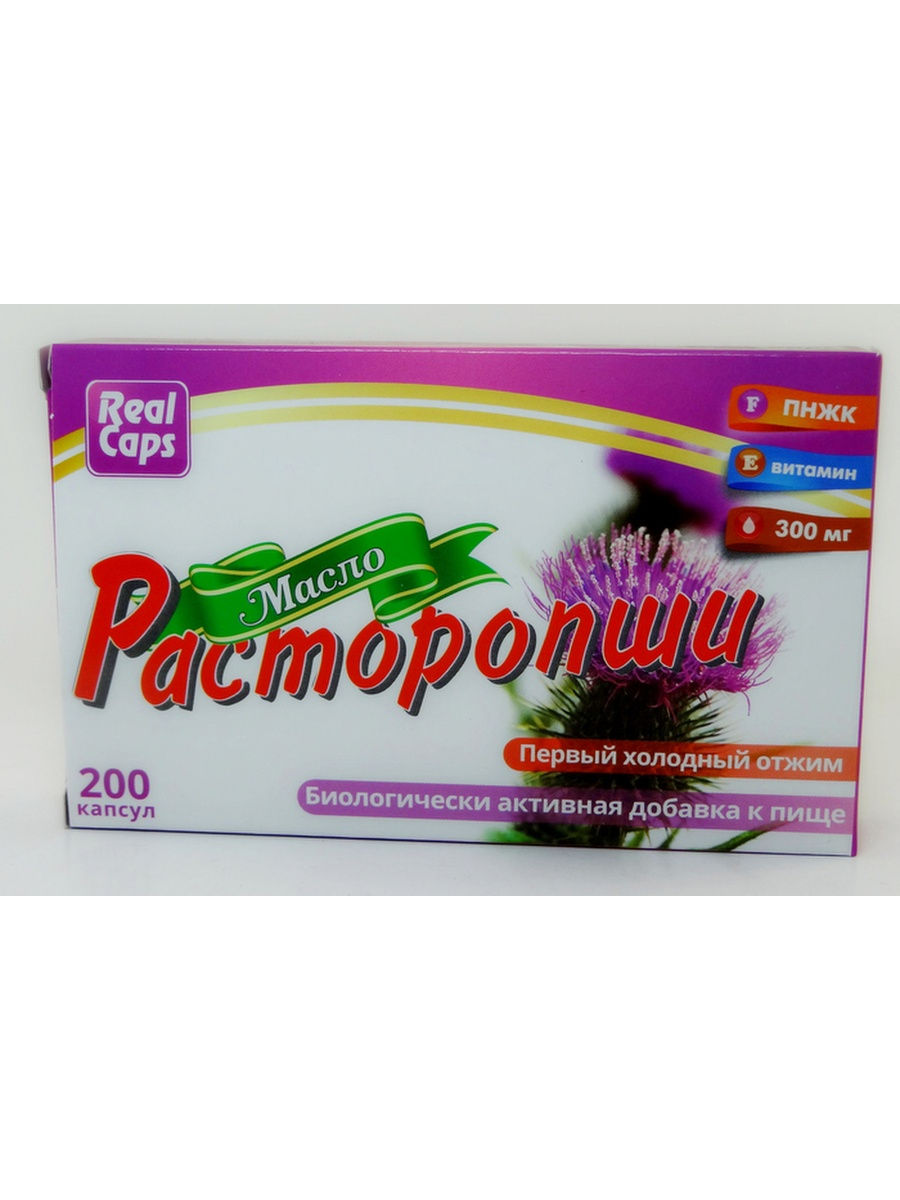





There are no reviews yet.